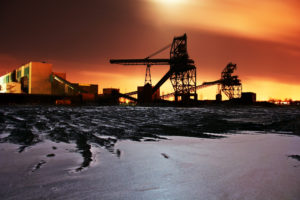 Petroleum is a common fossil fuel that made the jet engine possible and allows us to travel the world faster than ever before.
Petroleum is a common fossil fuel that made the jet engine possible and allows us to travel the world faster than ever before.
It is a naturally occurring, yellow-to-black liquid found in geological formations beneath the Earth's surface. It is commonly refined into various types of fuels.
A fossil fuel, petroleum is formed when large quantities of dead organisms that are carbon based, such as zooplankton and algae, get buried underneath sedimentary rock and subjected to both intense heat and pressure.
Due to this long process, petroleum is a limited resource just like coal.
Benefits
Gasoline: 41% of a barrel drives you somewhere
Jet Fuel: 40% of a barrel flies you somewhere
Residual Fuel Oil: 10% of a barrel ships you something
Petroleum Feedstocks: 9% of a barrel gives you plastic, rubber, fertilizers and even lipstick
Costs
We dig deep. Sometimes as deep as 8,000 feet and then another two miles horizontally. That’s more than three miles! We use rigs ranging in size from one that can fit into a backyard to ones that take up whole football fields. We use them to pump sediment from under the surface where pockets, known as reserves, of crude oil sit. It’s not easy to get, and it’s not something we can make. It comes naturally. Look at just some of the major ways petroleum effects the environment and a community.
Drilling
The process of drilling for oil and natural gas is extremely well regulated. But it is an industrial process and if not managed properly there can be damage to the environment including wildlife. Water tables are protected from damage by the casing (layers of steel and cement) that extend from the surface to approximately 800’ below ground, protecting the groundwater from contamination. But there can be some contamination due to spills on the surface. Likewise, offshore spills can damage oceans and wildlife. They have decreased dramatically since the 1970’s, but there is still work to be done when it comes to drilling for petroleum.
Refining
Crude oil is sent to the refinery and processed to make petroleum products. The refinery starts the process through simple distillation by heating and separating. Depending on the quality of the crude oil or what kind of product they want make, refineries will use more complicated processes and machinery. Heating and separating of crude oil releases greenhouse gases such as carbon dioxide and heavy metals that cause asthma and other respiratory diseases.
Transportation
Petroleum is transported in large volume by tanker trucks, pipelines, and ships. All of which add to greenhouse gas emissions. The safest way to transport petroleum is via pipeline., Pipelines also have the lowest carbon footprint due to emissions. But they are expensive to build and have an impact on the communities they travel through. Companies around the world are working to make transportation of petroleum safer. The world is using petroleum at an alarming rate and that makes it difficult to keep up with demand safely. Reducing consumption is the logical answer. If each of us does our part to use just 1% less, we will need to transport less.
Waste Storage
Arsenic, mercury, chromium, and cadmium are just some of the highly toxic chemicals that leak from unlined, unmonitored landfills and surface impoundments. And greater consumer consumption of items leads to more waste in landfills. In the US alone, most of oil waste from engine oil and other petroleum product are casually discarded by consumers. Join your local chapter today to find easy and convenient collection centers of oil waste.
